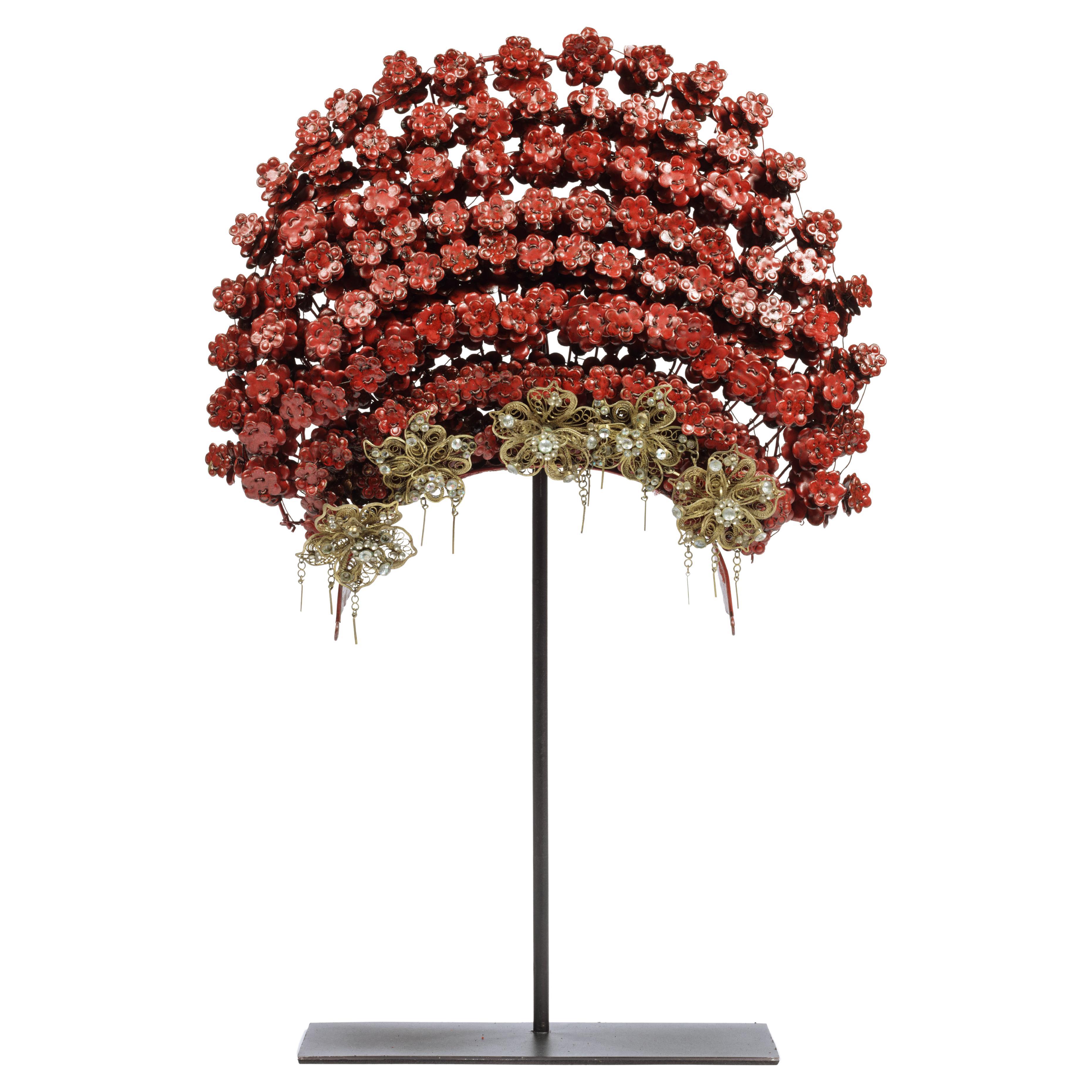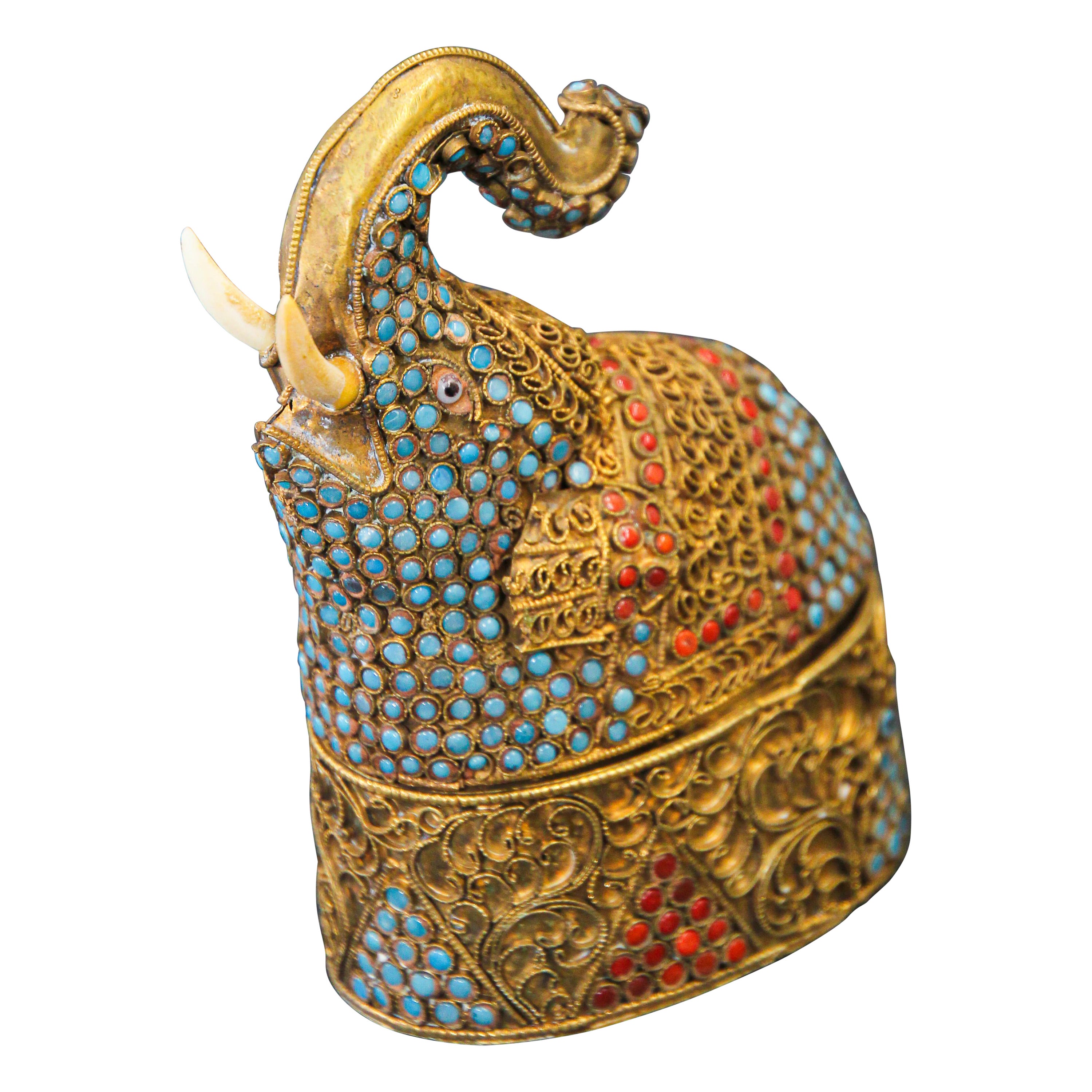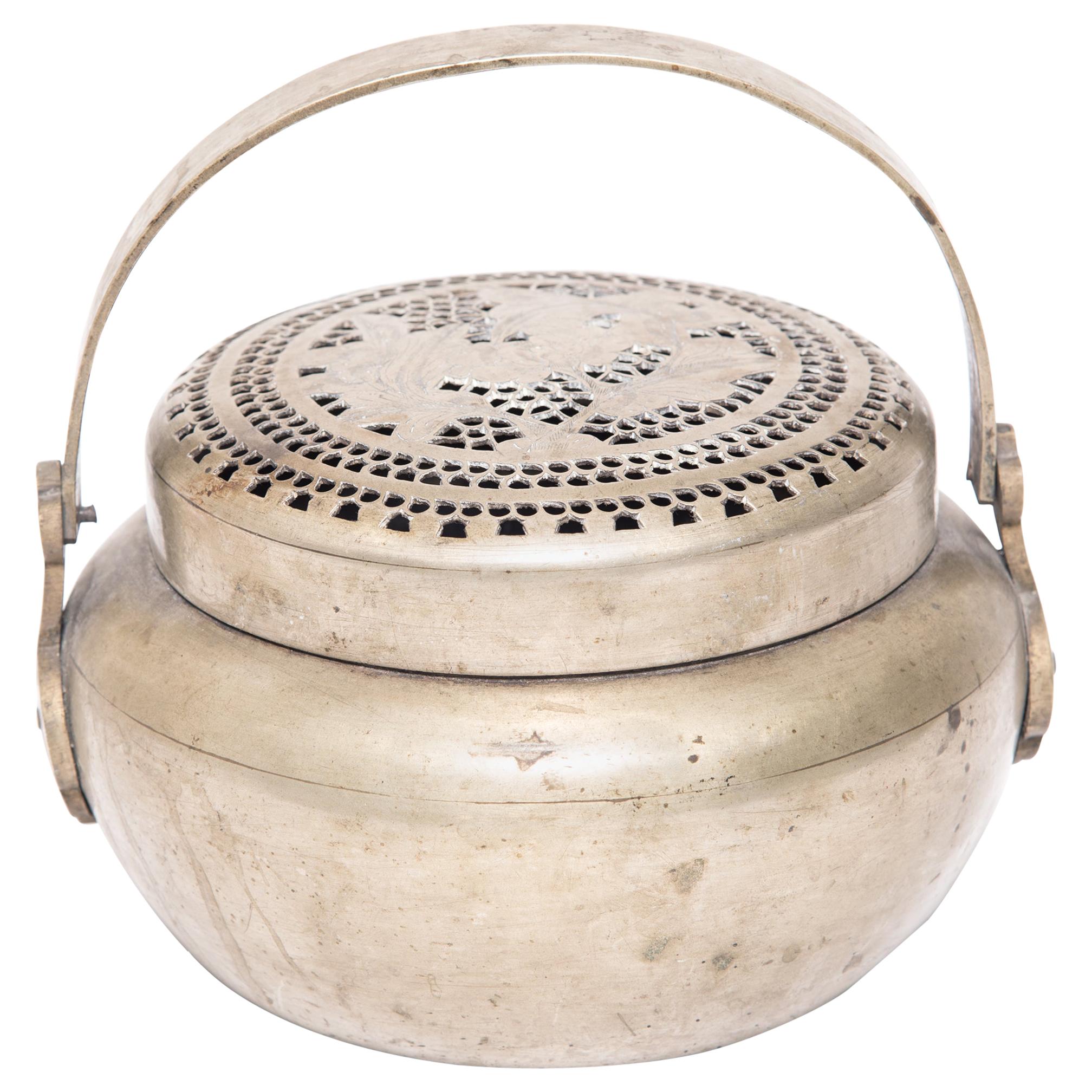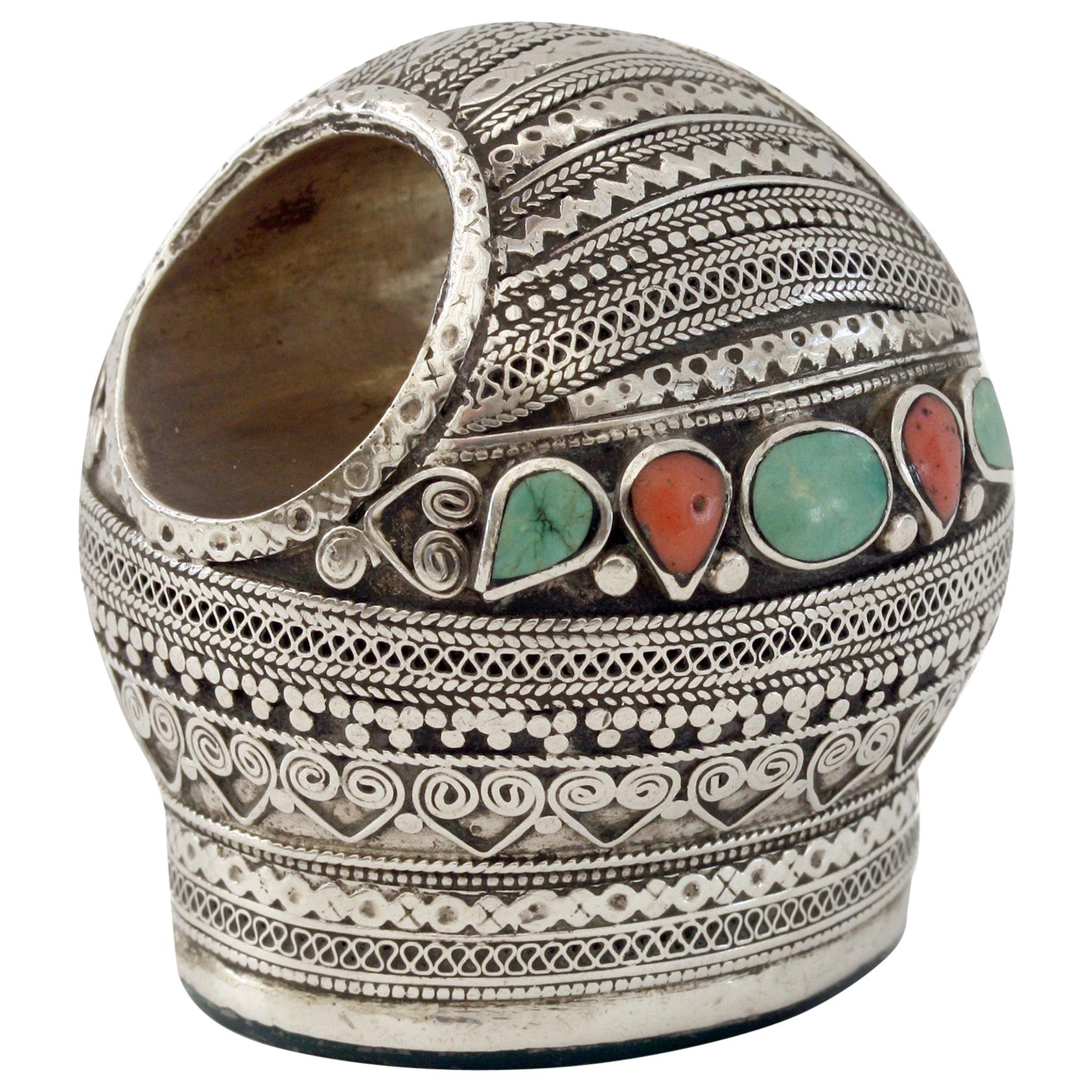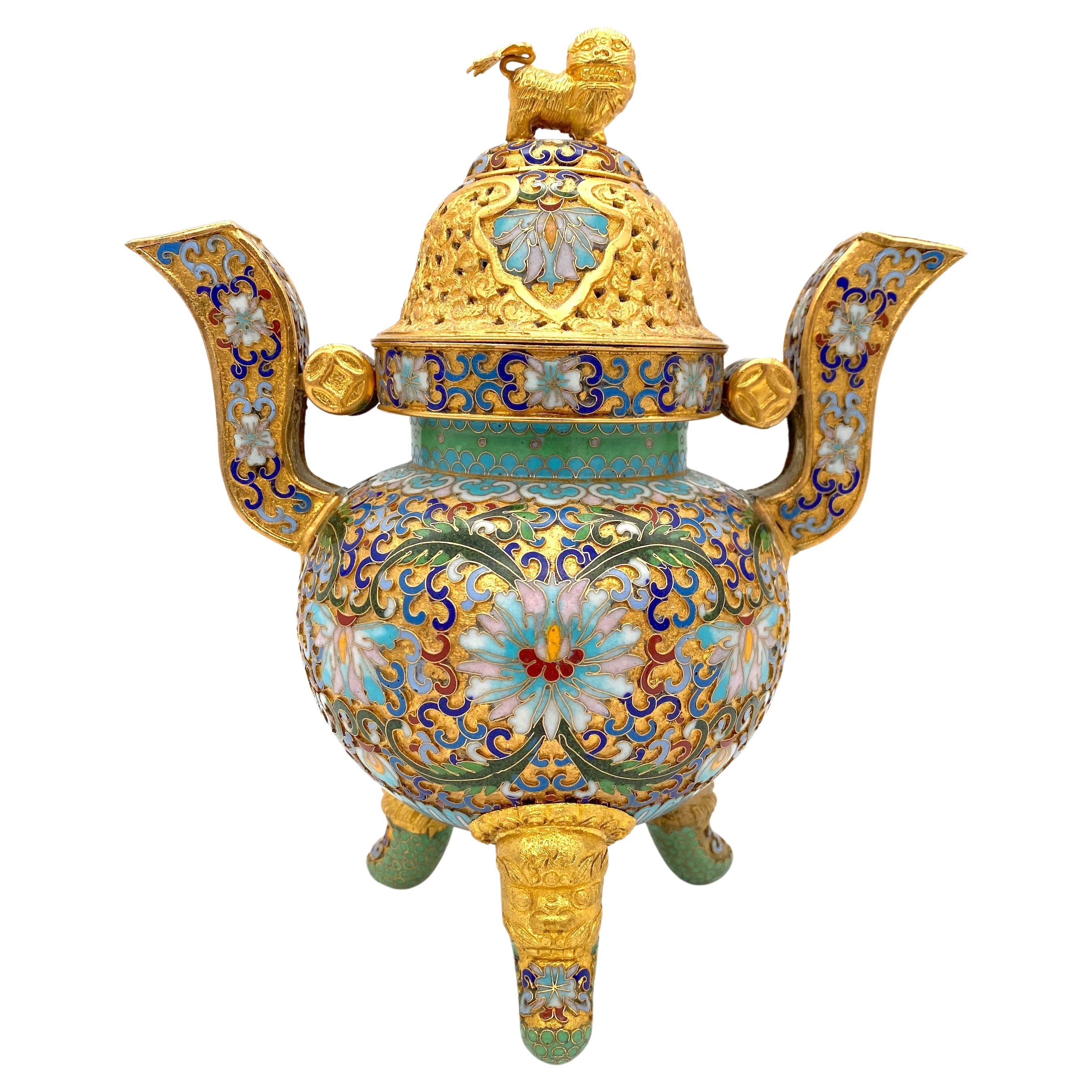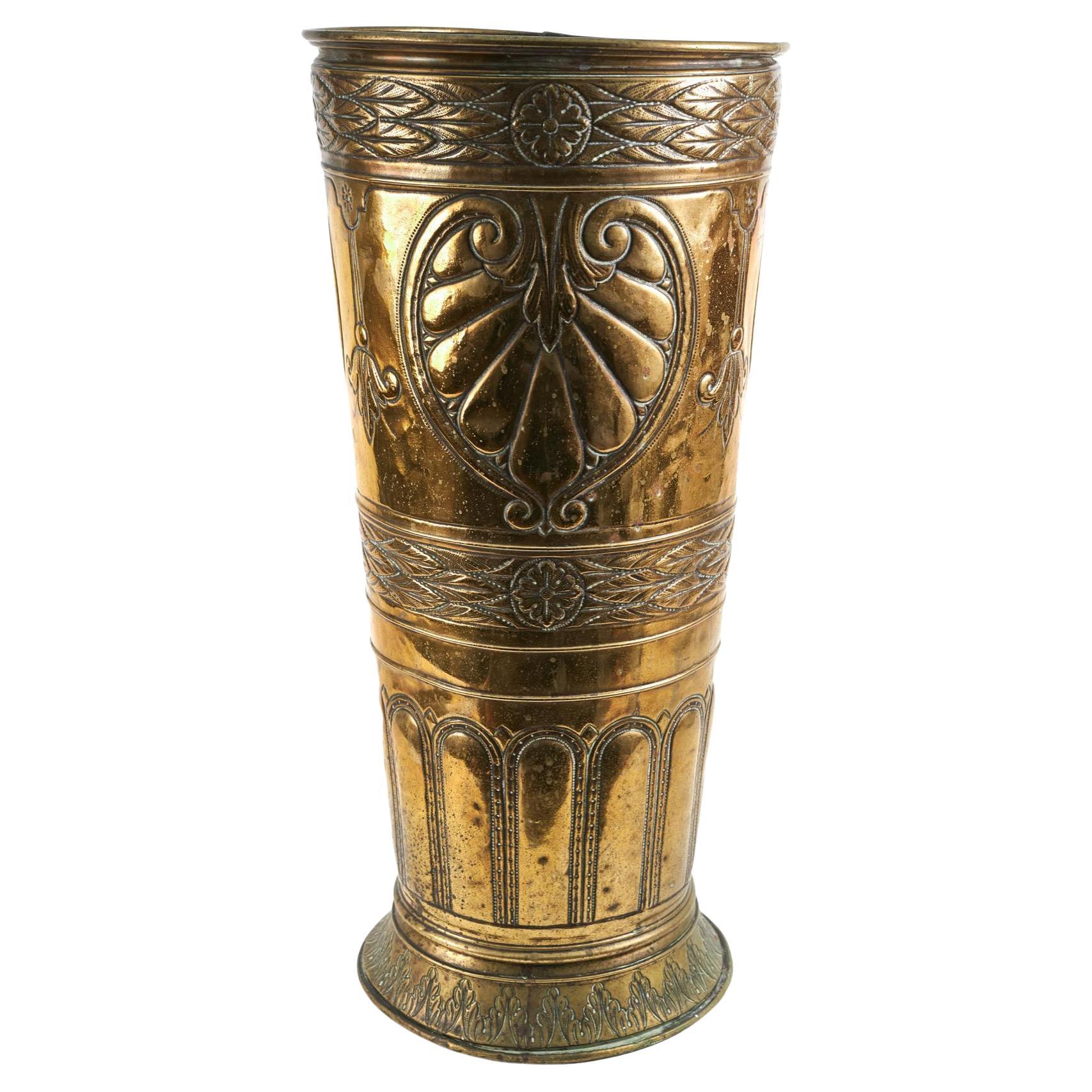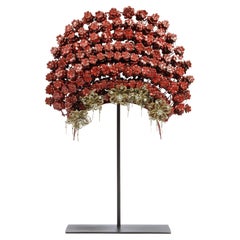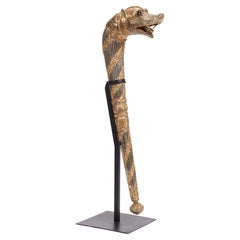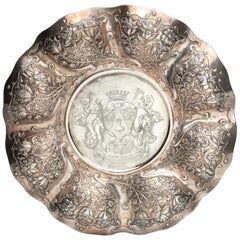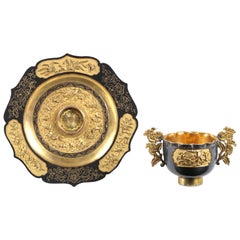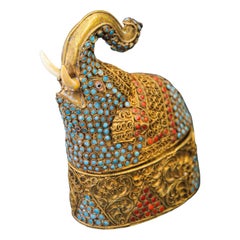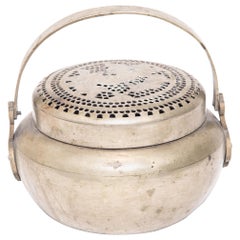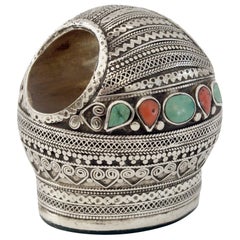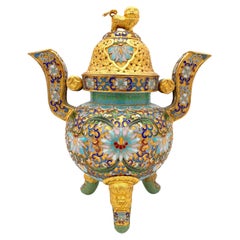Items Similar to An elaborate Minangkabau gem-set brass floral wedding crown or 'Suntiang'
Want more images or videos?
Request additional images or videos from the seller
1 of 5
An elaborate Minangkabau gem-set brass floral wedding crown or 'Suntiang'
About the Item
An elaborate Minangkabau gem-set brass floral wedding crown or 'Suntiang'
West Sumatra, Minangkabau, probably 1st half 20th century
H. 66.5 cm (incl. stand)
Provenance: Private collection, the Netherlands
The Suntiang: Crowning the bride In the Minangkabau culture, wedding crowns hold great cultural significance and symbolism. The Minangkabau people in West Sumatra, Indonesia, are well recognised for their very unique matrilineal social structure and abundant cultural heritage. One of their most visually captivating traditions is the usage of intricate bridal crowns, referred to as suntiang, worn by brides throughout traditional wedding rituals. The suntiang serves as more than a mere decorative head embellishment; it represents cultural heritage, societal principles, and the esteemed status of women in Minangkabau culture.
Design The suntiang is an imposing headpiece, usually made from several layers of gold-plated metal or imitation gold, adorned with floral patterns, mainly chrysanthemum forms, carefully distributed throughout the tiers. Based on the social standing of the bride and the specific style of the location, a suntiang can vary in thickness from 3 to 11 layers, with certain intricate variations extending to 20 layers. The weight of the crown, which may surpass several kilogrammes, serves as an indicator of status and endurance, representing the fortitude and tenacity anticipated from the bride.
The design of the suntiang is profoundly emblematic. According to tradition, the floral decorations orientated upwards symbolise purity, fertility, and prosperity. The predominant material, gold, represents not just affluence but also divine protection and spiritual purity, said to shield the bride from adverse influences. Each stratum of the crown contributes additional levels of significance, as higher tiers symbolise more sagacity and obligations as the bride assumes her duties as a spouse and parent.
Social and cultural meaning Within the Minangkabau culture, characterised by a pronounced matrilineal structure, women have a crucial role in preserving the family's lineage and customs. The suntiang functions as a potent visual manifestation of this function, underscoring the significance of women in the society. The crown symbolises the profound concepts of reverence, dignity, and accountability that are firmly embedded in Minangkabau culture.
By donning the suntiang at the wedding ceremony, the bride demonstrates her preparedness to assume her new obligations, while simultaneously highlighting the family's sense of pride and commitment to customs. The weight of the crown, commonly perceived as a load, symbolises the responsibilities that the bride would bear in her married life, emphasising the need of perseverance and fortitude in carrying out these tasks appropriately.
Regional variations Although the suntiang is well acknowledged throughout the Minangkabau region, its style and design can differ greatly based on the local customs. Crowns in coastal regions often exhibit a greater degree of fragility and complexity, which can be attributed to the impact of commerce and foreign cultural exchanges. Conversely, the highland areas display a preference for more sturdy and intricate patterns, frequently including supplementary decorations and hues that symbolise the local culture.
Within modern Minangkabau culture, there have been modifications made to the traditional suntiang. Contemporary brides may choose for lighter fabrics, which afford them enhanced comfort without compromising the magnificence and importance of the original design. Nevertheless, despite these modifications, the suntiang continues to be an essential element of Minangkabau identity, preserving its function as a representation of the ongoing continuity between historical customs and current rituals.
- Dimensions:Height: 26.19 in (66.5 cm)Width: 13.78 in (35 cm)Depth: 5.91 in (15 cm)
- Materials and Techniques:
- Place of Origin:
- Period:
- Date of Manufacture:20th century
- Condition:Wear consistent with age and use.
- Seller Location:Amsterdam, NL
- Reference Number:1stDibs: LU5458241341002
About the Seller
5.0
Recognized Seller
These prestigious sellers are industry leaders and represent the highest echelon for item quality and design.
Established in 1985
1stDibs seller since 2020
23 sales on 1stDibs
Typical response time: 1 hour
- ShippingRetrieving quote...Shipping from: Amsterdam, Netherlands
- Return Policy
Authenticity Guarantee
In the unlikely event there’s an issue with an item’s authenticity, contact us within 1 year for a full refund. DetailsMoney-Back Guarantee
If your item is not as described, is damaged in transit, or does not arrive, contact us within 7 days for a full refund. Details24-Hour Cancellation
You have a 24-hour grace period in which to reconsider your purchase, with no questions asked.Vetted Professional Sellers
Our world-class sellers must adhere to strict standards for service and quality, maintaining the integrity of our listings.Price-Match Guarantee
If you find that a seller listed the same item for a lower price elsewhere, we’ll match it.Trusted Global Delivery
Our best-in-class carrier network provides specialized shipping options worldwide, including custom delivery.More From This Seller
View AllA superb Minangkabau red-enamelled and brass wedding crown or 'Suntiang'
Located in Amsterdam, NL
A Minangkabau red-enamelled and brass wedding crown or 'Suntiang'
A Minangkabau red-enamelled and brass wedding crown or 'Suntiang'West Sumatra, Minangkabau, probably 1st half 20th ...
Category
Mid-20th Century Indonesian Metalwork
Materials
Brass, Enamel
An Indian part-gilt silver-clad ceremonial sceptre or mace with a tiger’s head
Located in Amsterdam, NL
Northern India or Deccan, late 19th century
L. approx. 82 cm (excl. stand)
Provenance:
Private collection, United Kingdom
This remarkable gilt-silver soonta (ceremonial sceptre) also known as choba (ceremonial mace) with a tiger's head stands out as an unparalleled example. It has a wooden base, clad with thick sheet part-gilt silver and has fine details such as teeth and a curling tongue. Especially with the inlaid glass eyes, in combination with the grand sculptural design, it would have been integral to an Indian maharaja’s attire, known as lawajama in North India and biruthus in South India, as referenced by Jackson & Jaffer. They would symbolise authority, power, and sometimes an attribute of various deities, particularly those associated with strength or combat. For instance, the Hindu god Hanuman, known for his immense strength, is often depicted holding a mace (*chob* or gada in Sanskrit). Similarly, the god Vishnu and his avatar Krishna are also frequently depicted with a mace among their other attributes.
Courtiers would raise these sceptres wrapped in rich brocades, with the head visible, during processions, signalling their association with the monarch. Alongside fly-whisks and standards, they were indispensable in ceremonial parades, underscoring the ruler's prestige. Terlinden notes that a soonta berdar was tasked with carrying the sceptre. These individuals, proficient in courtly manners, played key roles during audiences, from managing entrances to introducing guests. Their esteemed position often earned them generous rewards, including land grants. See for a depiction of sceptres in use the top right of a painting in the collection of the V&A, titled Processional scene with Amar Singh, ruler of Thanjavur (Tanjore), and Sarabhoji, from circa 1797.
For a very comparable piece, but with an elephant’s head, see the collection of the Indian Museum, Kolkata. For other less similar examples, see the V&A Museum London.
Sources:
A. Jackson & A. Jaffer, Maharaja: The Splendour of India’s Royal Courts, London, V&A Publishing, 1999
Christiane Terlinden Serra, Mughal Silver...
Category
Antique Late 19th Century Indian Metalwork
Materials
Silver
Dutch Colonial Silver Dish with the Von Pfeffel Coat-of-arms, 17th Century
Located in Amsterdam, NL
An unusual Indonesian lobbed silver dish
Jakarta (Batavia) or Coromandel coast, third quarter 17th century, apparently unmarked
The eight lobbed dish exuberantly decorated with floral motifs, with the middle section replaced, consisting of indistinctly marked German silver from the early 19th century, bearing the coat-of-arms of the Von Pfeffel family.
Diam. 30.5 cm
Weight 461 grams
Note:
Lobbed silver dishes with exuberant floral decorations were characteristic of the decorative arts in the Netherlands in the first half of the 17th century. This style of floral decoration was adopted by silversmiths as well as by furniture makers working on the Coromandel Coast and in Batavia, often by workers who had fled the Coromandel Coast because of war and famine. In Batavia this style was known as “Custwerck” (work from the Bengal coast).
These lobbed dishes are seldom marked. Only after 1667 the use of the town mark became obligatory in Batavia but only for silver made in Batavia not for silver imported in Batavia from other VOC settlements. The engraved coat of arms in the centre is a replacement of the original centre.
The coat of arms can be identified as those of Christian Hubert von Pfeffel (1765- 1834). As a diplomat, statesman, ambassador of Bavaria in London and Saxony and councillor to the King of Bavaria, he was made “Freiherr” in 1828 and since then used this coat of arms. His son Karl Maximilian Friederich Hubert Freiherr von Pfeffel (1811-1890) in 1836 married Karoline Adelheid Pauline von Rottenburg (1805-1872), the natural daughter of Prins Paul von Württemberg (1785-1852) and his mistress Margrethe Porth. Paul was the jounger brother of the King Wilhelm I of Württemberg (1781-1864). The heraldic motto of the von Pfeffels Vur Schande habe den Huot means as much as “Beware of Shame”. Christian Hubert Theodoor Marie Karl von Pfeffel Karl Maximilian’s grandson was the last male in the von Pfeffel line. His daughter, Marie Louise (Paris in 1882 - Cornwall 1944), born and grown-up in France, changed her name in de Pfeffel. She was the great grandmother of Boris Alexander de Pfeffel Johnson, the present British Secretary of State. None of the members of the von Pfeffel family had any direct links with the Dutch East Indies but indirectly by way of the Royal House of Württemberg they did.
Sophia Frederika Mathilda von Württemberg (1818-1877), daughter of Wilhelm I King of Württemberg, in 1839 married Willem III...
Category
Antique Late 17th Century Indonesian Dutch Colonial Sterling Silver
Materials
Silver
Rare Chinese Tonkin Ware Cup-and-Saucer, Early 18th Century
Located in Amsterdam, NL
A Chinese made tonkin ware gilt- and lacquer cup and saucer
China or Japan, Chinese artisans, early 18th century
The black-lacquered cup with gilt handles in the shape of sculptured chrysanthemums and a lobbed edge decorated with gilt engraved border, with a gilt foot-ring that fits into the saucer ring, with two cartouches showing partly undercut gilt relief trees and birds on a gilt granulated background, black lacquered bracket-lobed edge, depicting gilt engraved peony scrolls and three cartouches decorated with high relief gilt trees and birds on a gilt granulated background, the centre with engraved chrysanthemum, enclosed by a raised ring upon which the cup fits, around which a circular panel decorated with high gilt relief trees, flowers, birds and a butterfly on a gilt granulated background.
Measures: Cup: H. 5.7 x W. 8.5 cm
Saucer: Diameter 13 cm
Provenance:
Collection Felix Schäfer
Note:
The decoration of the cup and saucer is identical to the slightly smaller cup and saucer...
Category
Antique Early 18th Century Chinese Chinese Export Metalwork
Materials
Other
Pair of Fine Islamic Silver Filigree Rosewater Sprinklers, Early 18th Century
Located in Amsterdam, NL
A pair of very fine silver filigree rosewater sprinklers
Possibly India, Karimnagar, early 18th century
Height 31.6 cm and 31.7 cm, weight 39...
Category
Antique Early 18th Century Indian Islamic Metalwork
Materials
Silver
$34,855 / set
Free Shipping
Fine Indian Silver Filigree Casket with Hinged Cover, 18th Century
Located in Amsterdam, NL
A pair of very fine silver filigree rosewater sprinklers
Possibly India, Karimnagar, early 18th century
Measures: Height 31.6 cm and 31.7 cm,...
Category
Antique 18th Century Indian Metalwork
Materials
Silver
You May Also Like
Indian Mughal Style Gem-Set Gilt Brass Snuff Box in Elephant Shape
Located in North Hollywood, CA
Vintage gilt brass lidded trinket snuff box with red and turquoise stone inlaid in the form of an elephant with trump up.
Vintage Indian Mughal style metal brass and set with dozens...
Category
Mid-20th Century Indian Anglo Raj Metalwork
Materials
Stone, Metal, Brass
Chinese Floral Incised Brass Brazier, c. 1850
Located in Chicago, IL
This 19th century handcrafted bronze hand warmer would have been owned by a woman of means and filled with coals so she could warm her hands on cold...
Category
Antique Mid-19th Century Chinese Qing Metalwork
Materials
Brass
Middle Eastern Large Antique Silver Gem Set Intaglio Seal Ring
Located in Bishop's Stortford, Hertfordshire
An exceptional and large antique Middle Eastern regal gem set silver intaglio collectors seal ring dating from circa 1900. This large and heavy man’s ring is handcrafted with wonderf...
Category
Antique Early 1900s Afghan Other Metalwork
Materials
Silver
20th Century Chinese Elaborate Gilt Cloisonné Foo Dog Censor
Located in West Palm Beach, FL
20th Century Chinese Elaborate Gilt Cloisonné Foo Dog Censor
A stunning 20th Century Chinese Elaborate Gilt Cloisonné Foo Dog Censor, a masterwork of later craftsmanship. This exqu...
Category
20th Century Chinese Chinese Export Metalwork
Materials
Metal
$700 Sale Price
20% Off
Unusual Large Antique Brass Stick Or Umbrella Stand
Located in Ipswich, GB
Unusual Large Antique Brass Stick Or Umbrella Stand, circular in shape and decorated with shells, flowers and leaves.
Category
Early 20th Century Metalwork
Materials
Brass
Chinese Brass Hot Water Bottle with Floral Relief Pattern
Located in Chicago, IL
This squat brass vessel is an early Qing-dynasty hot water bottle, originally used to heat a bed or warm the body. The round container would have been filled with hot water through t...
Category
Antique Mid-17th Century Chinese Qing Metalwork
Materials
Brass
